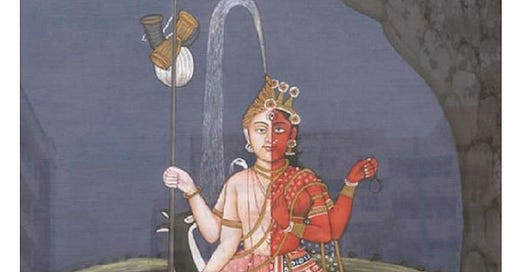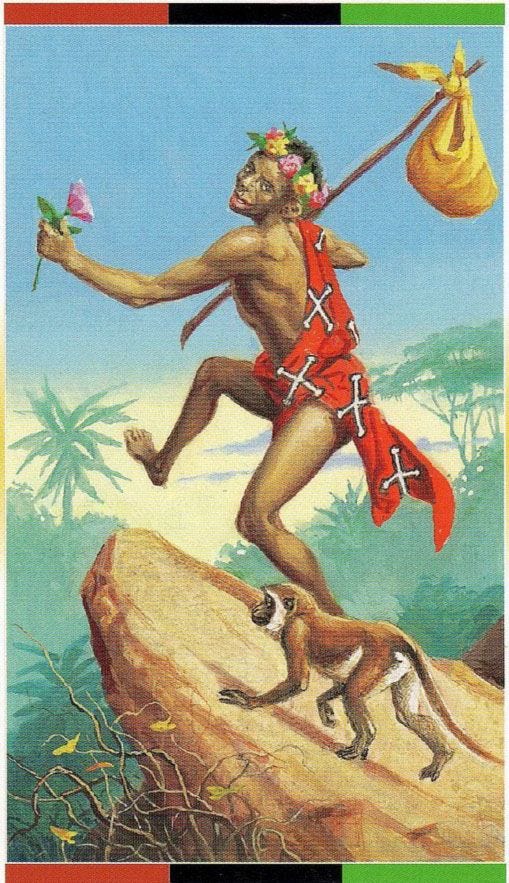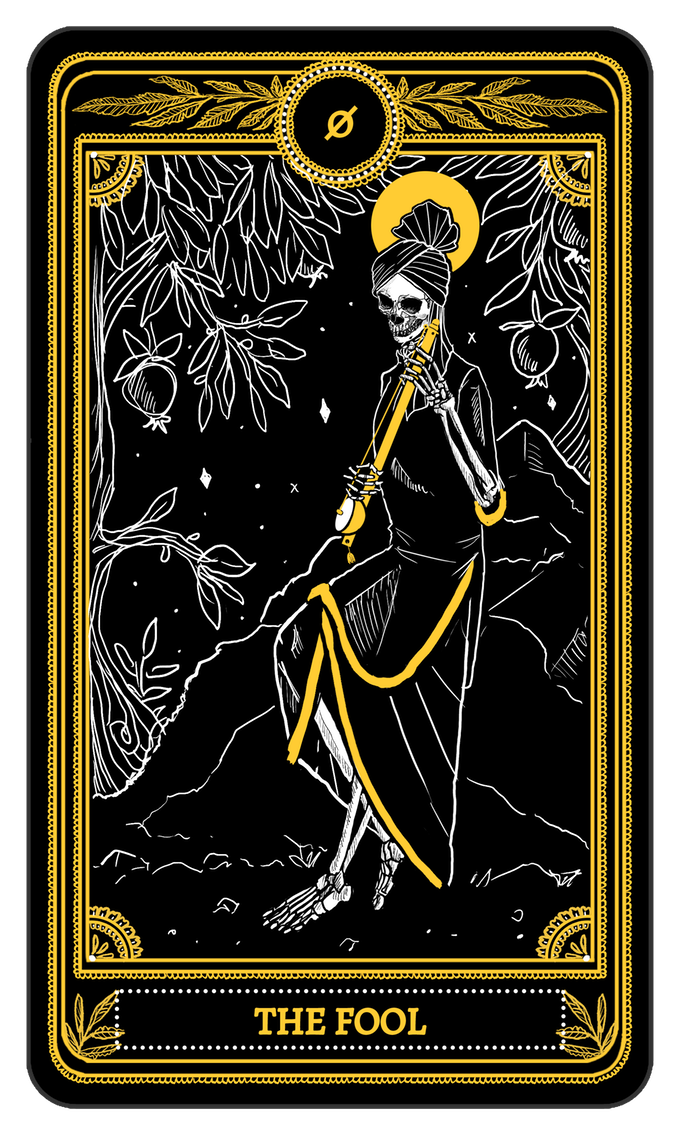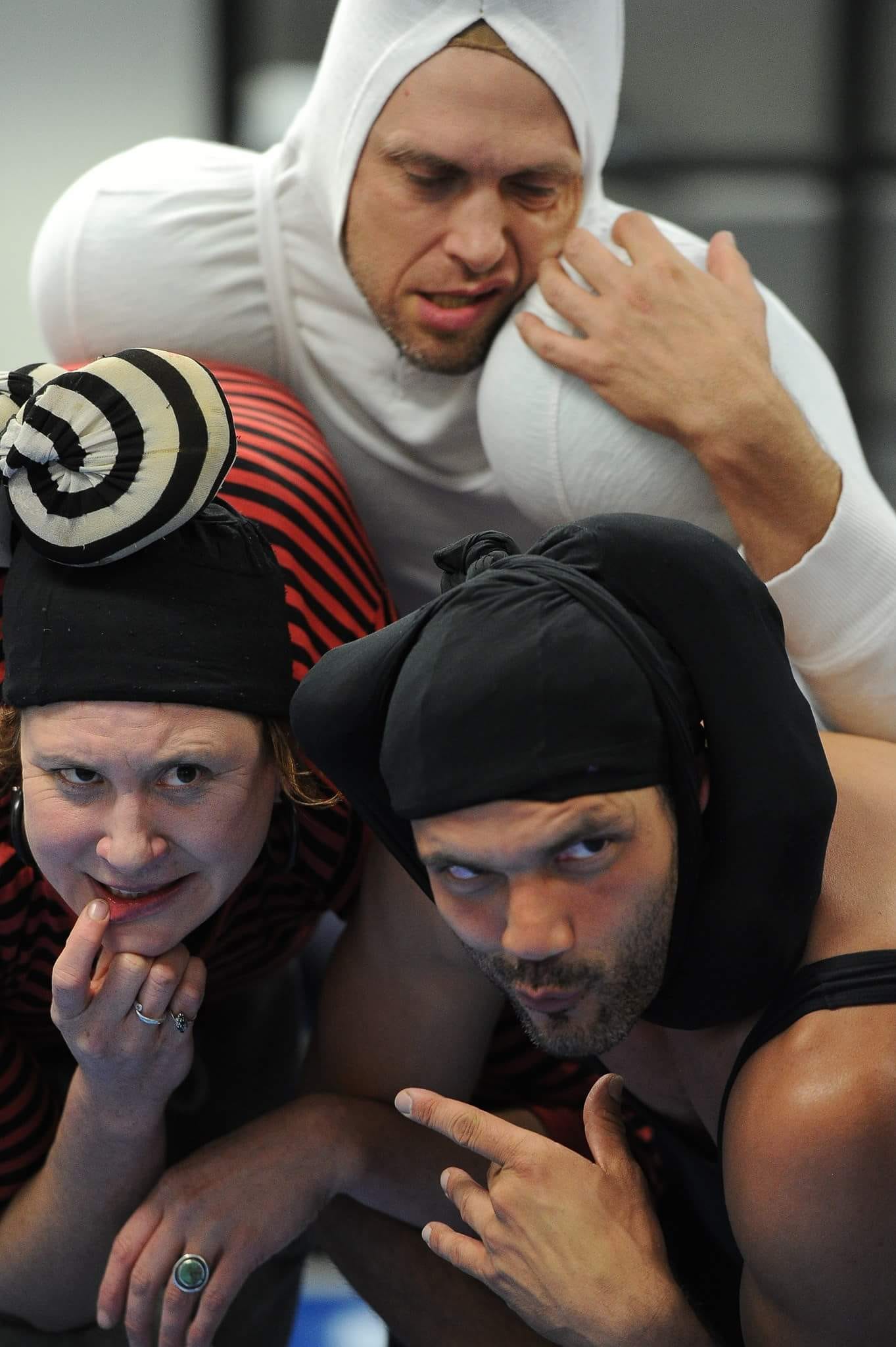Tantra: The Sanskrit word ‘Tantra’ derives from the verbal root tan, meaning ‘to weave’, or ‘compose’, and refers to a type of instructional text, often written as a dialogue between a god and a goddess1. According to Padoux, the verbal root Tan means: “to extend”, “to spread”, “to spin out”, “weave”, “display”, “put forth”, and “compose”. Therefore, by extension, it can also mean “system”, “doctrine”, or "work"2.
Cartoon: A cartoon is a type of visual art that is typically drawn, frequently animated, in an unrealistic or semi-realistic style. The specific meaning has evolved, but the modern usage usually refers to either: an image or series of images intended for satire, caricature, or humor; or a motion picture that relies on a sequence of illustrations for its animation. Someone who creates cartoons in the first sense is called a cartoonist,[1] and in the second sense they are usually called an animator.
The concept originated in the Middle Ages, and first described a preparatory drawing for a piece of art, such as a painting, fresco, tapestry, or stained glass window. In the 19th century, beginning in Punch magazine in 1843, cartoon came to refer – ironically at first – to humorous artworks in magazines and newspapers. Then it also was used for political cartoons and comic strips. When the medium developed, in the early 20th century, it began to refer to animated films which resembled print cartoons.[2]
Savagery
Kindness
Stupidity
Desperation
Denial
Mania
Euphoria
Lust
Satisfaction
These are but a few ways to describe emotional states.
It is helpful if we reframe emotion as “energy (in) motion” because the narratives of emotions are largely culturally specific and not universal. Surprise, surprise that the elite forces behind colonization and western supremacy have attempted to control the story of emotions in an attempt to subjugate peoples.
It is also helpful to define what a “state” is. I’m not talking about geo-political borders, but an internal mood or attitude that sets the tone for a person or character.
So, an “emotional state”: an inner attitude that consists of “energy (in) motion”.
I will generally be referring to “state-based” work from now on, recognizing that for most people, they will have to think of “emotions” to understand states. But states are not in fact solely dependent upon emotions, especially as the west defines emotion. We just have to start somewhere, and I want to start with some terms and phenomena you are already in contact with.
I am saying all this to get to a kind of singular point, which is that there are no such things as opposites, but that certain phenomena appear oppositional, depending on your personal and cultural associations and learnings.
For instance, if I say Anger, you might think the opposite of anger is Happiness, or Kindness, or something else. There’s no exact opposite for anger because the entire idea is a cultural and personal fiction. But people believe in it anyway, because our nervous systems are primarily developed from a binary action-response system: approach or avoid.
Approach and avoid appear oppositional, so we develop the idea of opposites, sometimes called “polarities”. We can just as easily call them extremes or “different parts of a spectrum”.
This is important because it is the beginning of real liberation, which is a complexity.
We have to start thinking in terms of “complementarity” instead of oppositionality.
The reason for this lies in the application of what is called Tantra, the definition at the start of this article. A common explanation of tantra is “the union of opposites”. In the practice and application of tantric wisdom, of a tantric system of knowledge, the practitioner begins to weave, layer and combine seemingly opposite energies, moods, emotions, polarities, attitudes into an integrated wholeness which is more complex, more expansive, and has more behavioral and perceptual options to choose from in any given situation. Thus, to the tantric practitioner, all phenomena become complementary depending on the context and capacity of the practitioner, depending on the state of the practitioner.
Tantra is the conscious activity and praxis of queering. Queering in the most cosmic sense, involving more than merely just sexuality or gender, but that absolutely include the body, the biology.
The doors I am flinging open here could easily encompass multitudes of books, media… endless explanations of ideologies, histories, concepts and oppressed peoples.
The tentacularity of these energies touches everything, is embedded in the mitochondrial DNA of everything, yet consistently obscured by whatever powers that be are currently playing king of the mountain.
These complementarities maligned as opposites are like switches on a switchboard, like dials on a mixing station. So obsessed with the dials and switches we rarely consider the ground that allows these phenomena to dance in the first place.
This ground is nondual nature, which does not compete with anything else. Duality on the other hand, competes endlessly. It is in many ways, the limiting force that constrains our creative potential. But because we are often so deluded and confused, stressed and oppressed, we lose the forest for the trees and reduce our dreams to ash on the tongue.
However, art is the craft and medium that allows us to integrate these energies in complex and vitalizing ways. We all already know that art is not simple, does not reduce life to merely right and wrong, good and evil. Art contains subtext, nuance, relativity, focus, style, aesthetics.
Let’s talk about the Blues for a moment. That Black artform that so ingeniously turned enslaved people’s trauma into perhaps the greatest modern artform imaginable. The mixture of pain, sadness, grief, and lament with bawdy sexuality, hunger, passion, ecstasy, longing. That mixed comedy with tragedy in ways that the commonest of people could not only understand, but that would lift them out of depression into what was possible. From the work and shout songs of the fields, the sustaining chorus of community through impossible hardships, mixing with the traditions of many other oppressed peoples, especially in places like New Orleans, the Caribbean, and New York City. Over generations the rhythms and rituals of the old animist world adapted into new forms, REMIXED, for the terrible situations of the modern empire.
A long and drawn out history of colonized pagans and animists, finally erupting into an artform that returned parts of our collective soul back to our bodies.
The soul, like a frightened bird, cannot be forced to return to its nest. But in ways most mundane and mysterious, will remember it’s home when that home is prepared well, sung for, sung from, and consecrated again.
This long, twisted path that birthed jazz, the blues, rock and roll and all modern popular musical forms, is paralleled by the path that theater traversed from ancient times in Africa, through the Greek and Roman colonization of old Europe, into what is considered the modern Hollywood entertainment industry.
And the character that we will track through all of this mess is the clown.
The clown, and the clown’s darker trickster shadow, the bouffon, embrace this inescapable process of precarity, of falling apart, to get their hands dirty, filthy, slimy in the muck and guts of our taboo feelings about Control. Our penchants for and petty attempts at control, and our relationship with That-which-we-do-not-control-that-controls-us.
If we laugh AT the red nose clown, then the bloody nosed bouffon laughs at us, at our complicity in our own derangements and sordid affairs.
The red nose clown is innocence, presence, eye contact and connection. The red nose clown is possessed by the state of play like that of a child, undamaged by the cruel interactions of a ruthless society. The red nose clown is stupid to the point of enlightened wisdom nature. Confusion becoming joy, not terror. Terror becoming farce, not trauma.
The bouffon however, is like the MUCH MUCH older sibling of the red nose clown.
The bouffon is satire embodied, is parody taken to a grotesque display of delighting in all phenomena, no matter how prohibited. The bouffon is grotesque, from the word grotto meaning a hidden place, from the shadows of our ancestral natures, from the woods, the old grove forests, swamps and bogs and caves. The bouffon is panic in its original celebratory state, referring to the great horned god PAN, a satyr who is older than the old gods, a primeval sexual and erotic force that predates our human morals and ethics. It is from satyr that we get the word satire, after all. A dark and horny kind of comedic commentary, a play on words, double entendres and innuendos. Remember that the horn in horny is sharp and can stab you! …or give and receive great pleasure.
If we combine the innocence, presence and undamaged foolishness of the red nose clown, with the sharp, dark and lustful delight of the bouffon, we can begin to apprehend what the deathclown is.
This grotesque comedy can still be witnessed in its original form in the clans of the Benjali and Bayaka in Central Africa. These hunter gatherer tribes are egalitarian, and still matrifocal. Matrifocality is not the same as matriarchy, not the same as patriarchy. We moderns are on the ass end of thousands of years of the most insidious domination plot ever conceived. To give this topic justice would take hours, months, years of decolonial somatics and historical study. Or, we can just enter through the back door of the deathclown, that remembers exactly what the true world is, unlike our brainwashed modern personalities.
From the body of the hag, the black mother, arises the collective of cackling crones, singing the world OPEN. Singing the forest open, the blood open, the sky and shadows open. This opening of the boundaries is the great yin power of birth that all DNA contains, regardless of gender. Mothers, women, invented culture and language through song and ritual, through direct theatrical contact with the great OTHER of the world, the forest, the blood, the moon, the night. Through the body and the land, the original trickster emerges, takes shape, becomes us. The first hungry spirit possessor is the disruptor. Not evil, the trickster makes this world by playing through it, by breaking its fear-based habits forcefully, with the power of the grotesque, the power of collective laughter, of mocking satire, of taboo play and chant.
From the mud and blood of the earth, the bouffon comes. Yet the bouffon is a downstream trickle of an older torrential wave. The bouffon is how European memory of this great carnivalesque spirit was hidden, protected, maintained, and partially sanitized for a post-feudal society in which elites had already captured the power of the commons, the land, of women and their collective power by breaking them apart from each other. When the hags and hags-in-training cannot mob together in ritual singing to tear open the boundaries of our human ego, then we begin to shrivel into cowards again, afraid of the dominator’s whip, sword, fist.
The remnants of this cacophonous ritual comedy can still be seen at Mardi Gras, at Carnivale, in the historical accounts of Dionysian orgies, in the theatrical form of Commedia with its exaggerated archetypes making fun of our addictions and desires. And in modern times, can be seen in entertainment, in the comedy of Sasha Baron Cohen’s Borat, in the YES MEN, Natalie Palamides: Nate a one man show, The Key & Peele sketch show and Jordan Peele’s subsequent horror and dark comedic movies, the surrealistic improvisational performances of Reggie watts, and in many fringe festivals and avante garde surrealist experiments.
But the real power here is in taking it back, in developing the deathclown and riding it consciously, back towards collective power. In effect re-creating the original matrifocal unions that enacted taboo power rituals of singing and dancing and ritual mockery every lunar cycle to maintain an egalitarian animist society.
to be continued in part four
some bibliography you probably won’t read or understand:
Clown - Wikipedia
https://en.wikipedia.org/wiki/Clown
Trickster - Wikipedia
https://en.wikipedia.org/wiki/Trickster
Bouffon - Wikipedia
https://en.wikipedia.org/wiki/Bouffon
About | Naked Empire Bouffon Company
https://nakedempirebouffon.org/about/#whatbouffon
https://giovannifusetti.com/bouffon-intensive/
When Clowns Fight the Power | HowlRound Theatre Commons
https://howlround.com/series/when-clowns-fight-power
The Complex Legacy of Black Comedians in Blackface (melmagazine.com)
https://melmagazine.com/en-us/story/black-comedians-blackface-minstrel-show-history
Langston Hughes’ The Black Clown
https://images.lincolncenter.org/image/upload/v1563827496/qlvpfs7ovurhd93kvirf.pdf
Ricanness (nyupress.org)
https://nyupress.org/9781479825684/ricanness/
Sacred Dirt: On Words and Power by Morna Finnegan November 15, 2022 on Vimeo
Radical Anthropology’s Videos on LAUGHTER
https://vimeo.com/user33365184/videos/search:laugh/sort:date









all of this. Thank you for worbing it all... feels very resonate to my system to read this post. Appreciate you to the moon and back